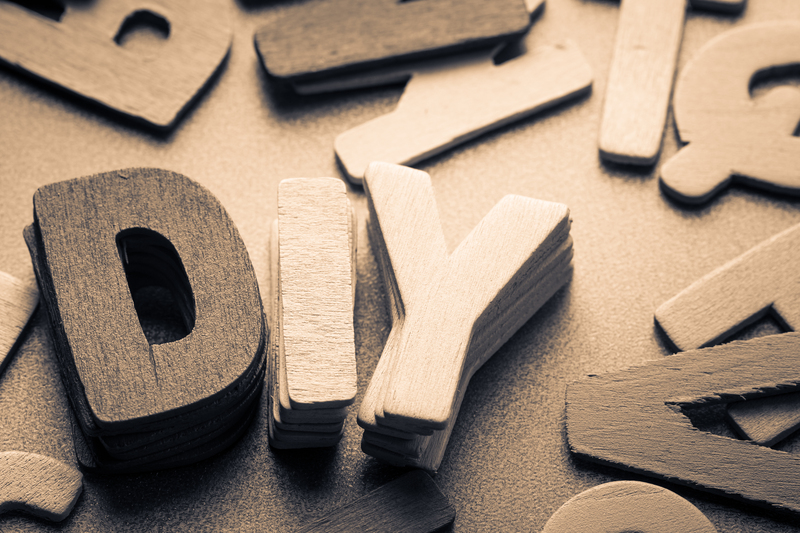Minimizing Landfill Waste Through Smart Packaging and Cardboard Disposal
Landfills worldwide are nearing capacity, and the environmental impact of waste accumulation is undeniable. Among the most abundant contributors to landfill volumes is packaging waste, particularly cardboard. In the drive towards sustainability, minimizing landfill waste through smart packaging solutions and efficient cardboard disposal techniques has become an urgent priority for businesses and consumers alike. This comprehensive guide delves into innovative methods to reduce landfill burden, the role of advanced packaging designs, and practical steps for proper cardboard recycling.

Understanding the Problem: Packaging Waste and Landfills
The modern economy, characterized by online shopping and constant consumer demand, has led to a dramatic increase in packaging material usage. According to the Environmental Protection Agency (EPA), packaging accounts for a significant proportion of landfill contributions, with cardboard and paper packaging being the largest culprits.
- Cardboard alone makes up about 30% of municipal solid waste by volume in the US.
- *Improper cardboard disposal* leads to unnecessary landfill expansion and increased greenhouse gas emissions.
- Many packaging materials used today are not designed with recyclability or minimalism in mind.
Recognizing the scale of this issue is the first step towards enacting meaningful change through smart packaging and responsible cardboard disposal practices.
What Is Smart Packaging and How Can It Reduce Landfill Waste?
Smart packaging refers to the use of materials and designs that are optimized for sustainability, recycling, and overall efficiency. By incorporating smart packaging principles throughout supply chains, companies can dramatically reduce the amount of waste sent to landfills.
Key Features of Smart Packaging
- Minimal material usage: Using only what is necessary by eliminating layers, fillers, and oversized containers.
- Recyclable materials: Selecting materials such as cardboard that can be readily recycled multiple times before reaching end-of-life.
- Compostable and biodegradable options: Packaging that breaks down naturally, reducing landfill impact.
- Modular designs: Standardized shapes and sizes enhance stackability and reduce transportation waste.
- Consumer-friendly labels: Clear guidance for recycling and disposal encourages proper end-of-life handling.
The Benefits of Smart Packaging for Landfill Waste Reduction
The careful adoption of smart packaging offers several advantages directly related to landfill waste minimization:
- Reduces Waste Generation: Smart designs produce less waste due to material efficiency.
- Enhances Recyclability: Packaging made from recycled & recyclable materials feeds into the circular economy, reducing landfill dependency.
- Lowers Carbon Footprint: Decreased waste transportation and landfill methane emissions contribute to a healthier environment.
- Encourages Eco-friendly Consumer Choices: Clear disposal instructions boost recycling rates and minimize contamination.
Cardboard: The King of Packaging and Landfill Waste
Cardboard, especially corrugated cardboard, is the backbone of global shipping and retail. While cardboard packaging is more sustainable compared to plastic alternatives, it still represents a major challenge for waste management and landfill reduction.
- Globally, billions of cardboard boxes are used and discarded every year.
- Recycling rates vary widely by country, with some regions still disposing of more than 40% of cardboard in landfills.
- Contaminated or coated cardboard (for example, with food residues or plastic films) often cannot be recycled effectively.
To maximize the sustainability of packaging, we must focus on improving cardboard recycling practices and minimizing contaminated waste streams.
Strategies for Minimizing Landfill Waste Through Cardboard Disposal
1. Prioritize Cardboard Recycling
- Break down cardboard boxes to save space and ensure easy processing.
- Remove all packing materials, tape, and labels before recycling.
- Avoid including wet, greasy, or food-soiled cardboard in recycling streams--it can degrade entire batches.
Proper separation and cleaning of cardboard make recycling more efficient, reduce landfill contributions, and lower the need for virgin materials. Check your local recycling program for specific guidelines to ensure compliance.
2. Reduce, Reuse, and Repurpose Cardboard
- Reuse boxes for shipping, storage, or creative projects rather than immediately disposing of them.
- Local donation centers or community groups often accept clean, sturdy boxes for reuse.
- Shred unusable cardboard for composting or as animal bedding, further diverting waste from landfills.
By extending the lifespan of cardboard packaging, both businesses and households can make a tangible impact on landfill waste minimization.
3. Support Innovations in Recyclable and Compostable Cardboard
The packaging industry has made strides in developing fully recyclable and biodegradable cardboard products. Some innovations include water-based inks, starch-based adhesives, and plastic-free coatings, all of which enhance recyclability and reduce contamination.
- Choose products that advertise plastic-free packaging or bear recognized eco-certifications.
- Companies can work with packaging suppliers committed to sustainable materials and closed-loop manufacturing.
Innovative Smart Packaging Solutions to Decrease Landfill Waste
Right-Sizing Packaging
Eliminating excess space in packages reduces material use, shipping costs, and waste volume. Advanced software helps companies tailor boxes more precisely to product dimensions, minimizing unnecessary cardboard disposal.
Mono-Material Packaging
Using a single type of material--such as pure cardboard--makes recycling simpler and more effective. Mixed-material packages often end up in landfills due to separation difficulties.
Edible and Compostable Packaging
Certain innovative brands offer edible packaging or compostable alternatives that break down rapidly in home compost systems or industrial facilities, leaving almost no landfill trace.
Reusable Packaging Programs
- Subscription services now offer reusable box exchanges, significantly replacing single-use cardboard.
- Large retailers, especially in e-commerce, are piloting returnable packaging loops to minimize waste streams.
The Role of Consumers and Businesses in Landfill Waste Minimization
Consumer Actions That Make a Difference
- Shop with awareness--select products with sustainable, minimal, or recyclable packaging.
- Participate in local recycling programs and follow best practices for cardboard disposal.
- Share knowledge about minimizing landfill waste and encourage others to join sustainable initiatives.
Business Responsibilities for Sustainable Packaging
- Evaluate product packaging for material reduction and maximal recyclability.
- Switch to suppliers offering sustainable and smart packaging designs.
- Educate customers by providing clear recycling guidelines and labeling.
Collaboration across the supply chain is crucial. When businesses and consumers work together, fewer materials end up in landfills, and the entire packaging lifecycle becomes more sustainable.
Government Policies and Legislation Accelerating Change
Laws mandating recycling rates, packaging take-back schemes, and producer responsibility are propelling industry-wide changes. These policies help steer the market towards:
- Standardizing recycling labels and instructions
- Outlawing excessive or non-recyclable packaging materials
- Incentivizing investment in sustainable packaging research and infrastructure
Effective governance ensures that landfill waste minimization remains a priority at both the local and national levels.
Challenges in Minimizing Landfill Waste Through Packaging and Cardboard Disposal
- Contamination of recycling streams (e.g., food on cardboard) remains a persistent problem.
- Logistical barriers, like a lack of recycling facilities or pickup services, hinder cardboard disposal efforts in rural or underserved areas.
- Consumer confusion over which materials are recyclable leads to increased landfill rates.
- *Cost considerations* can deter small businesses from adopting innovative, sustainable packaging.
These challenges require sustained attention, investment, and education to overcome.

Future Trends: Advancing Smart Packaging and Cardboard Waste Reduction
Exciting trends promise to drive down landfill waste through better packaging and cardboard disposal options:
- AI-driven packaging design that automatically reduces material use and increases recyclability.
- Next-generation biodegradable coatings for cardboard increase compostability without sacrificing durability.
- City-wide zero-waste initiatives pushing retailers to adopt reusable and returnable packaging.
- Eco-labeling standards simplifying consumer choices towards landfill-minimizing products.
As technology evolves, the integration of digital tracking and smart labeling will further enhance the efficiency of recycling programs and cardboard disposal systems.
Conclusion: Every Step Counts Towards Minimizing Landfill Waste
The imperative to minimize landfill waste has never been greater. Through smart packaging solutions, improved recycling, and collective action, we can drastically reduce the environmental impact of cardboard and other packaging materials.
- Businesses must embrace innovation in packaging design and material sourcing.
- Consumers play a vital role in proper cardboard disposal and recycling participation.
- Policymakers need to mandate responsible packaging and fund recycling infrastructure.
By working together, we can shift from a throwaway culture to a sustainable, circular economy--preserving resources and protecting the planet for future generations. Start today: recycle, reuse, and demand smart packaging to help minimize landfill waste.



